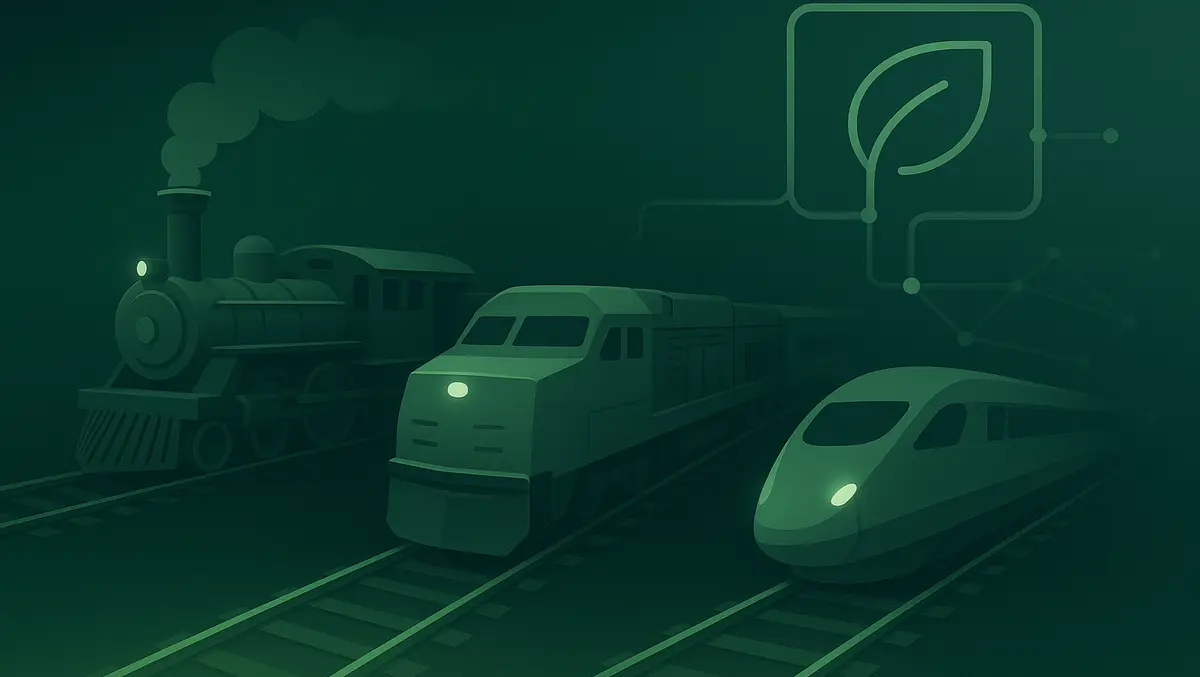
The transformation of American railroads: From industrial revolution to sustainable strength
Honoring our past while forging a sustainable future for modern rail infrastructure
America's rail network stands as one of the most significant technological and economic achievements in our nation's history. From the Baltimore and Ohio Railroad's first run in 1830 to today's integrated systems covering over 140,000 miles, railroads have been the backbone of American commerce and connectivity. This National Train Day, we recognize the force that has shaped our nation's landscape and economy for nearly two centuries.
And yet, the railroad industry now faces a critical turning point. Climate change, resource conservation, and environmental responsibility require us to rethink the traditional infrastructure solutions we've used since the 19th century. This isn't abandoning our heritage—it's applying the same innovative spirit that built the transcontinental railroad to today's challenges of delivering operation excellence and unmatched safety with sustainability and ecological responsibility.
The engineering marvel of American railways
The early American railroad showcased industrial ingenuity at its finest—steam locomotives running on tracks secured to wooden ties cut from old-growth trees. Trees were felled along the right of way as the railroad expanded across the continent. These wooden foundations powered the transportation revolution that drove westward expansion and transformed America into an industrial powerhouse. Simply put, the wooden tie became the bedrock of our entire rail network.
The thing is, this historical approach has had significant environmental costs. We replace about 20 million wooden ties annually, harvesting 6 million trees in the process. The concrete alternatives developed in the early 20th century and expanded in the 1970s created their own problems: high embodied carbon, susceptibility to cracking in extreme conditions, and substantial lifecycle costs. To truly honor the railroad's legacy, we can't just replicate old solutions. We need to advance toward more sustainable alternatives that maintain the industry's core values of service and excellence.
The sustainability imperative in modern rail infrastructure
The railroad industry has clear environmental advantages that make it essential for a sustainable transportation future. Rail freight moves a massive portion of America's long-distance cargo while producing far fewer greenhouse gas emissions than trucks. Each railroad, from the Class 1s to the shortlines, has a well-articulated sustainability vision and plan. But this advantage doesn't let us off the hook for addressing our infrastructure's environmental impact.
At Evertrak, we've developed composite railroad ties as a direct response to this challenge. Made with Glass Fiber Reinforced Polymer from recycled plastic, these ties divert waste from landfills and eliminate toxic preservatives completely. Our engineering meets or exceeds traditional materials in performance—lab and field testing proves superior resistance to moisture, freeze-thaw cycles, and mechanical stress, all while maintaining stability throughout their longer service life.
The economics of sustainable infrastructure
While the shift to sustainable infrastructure is environmentally necessary, it's also smart business. Wooden ties should last decades, but 4 to 6 million ties in high-rot regions fail in less than 12 years. This premature failure forces regular track outages, maintenance costs, and disposal problems. Evertrak's composite ties, by comparison, perform reliably for 50 years in high-rot region 1, cutting replacement costs, reducing deforestation, and eliminating dangerous creosote. We have a forest of plastic available to make better ties outside the doors of every community in America.
This economic logic mirrors railroads' broader efficiency advantage. Just as rail transport maximizes freight moved per unit of energy, sustainable infrastructure maximizes longevity per installation effort. Reduced maintenance creates a cascade of benefits: lower labor needs, less equipment mobilization, fewer traffic disruptions, and better track geometry—all improving operational reliability. These advantages benefit not just railroad operators but the entire economy through stronger supply chains and lower transportation costs.
Continuing the legacy of innovation
On National Train Day, we honor both America's railway achievements and their ongoing evolution. The innovative drive that moved the industry from steam through diesel electrification to today's precision scheduled railroading must now tackle infrastructure sustainability. This isn't abandoning tradition—it's its logical next step, adapting proven principles to today's challenges.
At Evertrak, we're advancing this vision through ongoing research, rigorous testing, and industry partnerships. Our composite ties aren't just a product but a philosophy: preserving our railroad heritage requires forward-thinking innovation, not rigid adherence to old methods. By embracing sustainable solutions, we honor the industry's transformative legacy while ensuring its future for generations. The iron horse transformed 19th century America, but its 21st century successor must combine that revolutionary power with environmental responsibility and resource stewardship.

